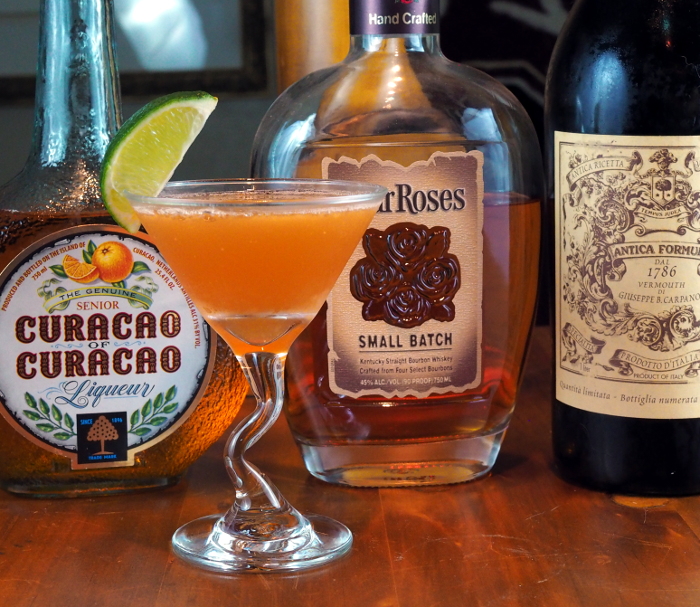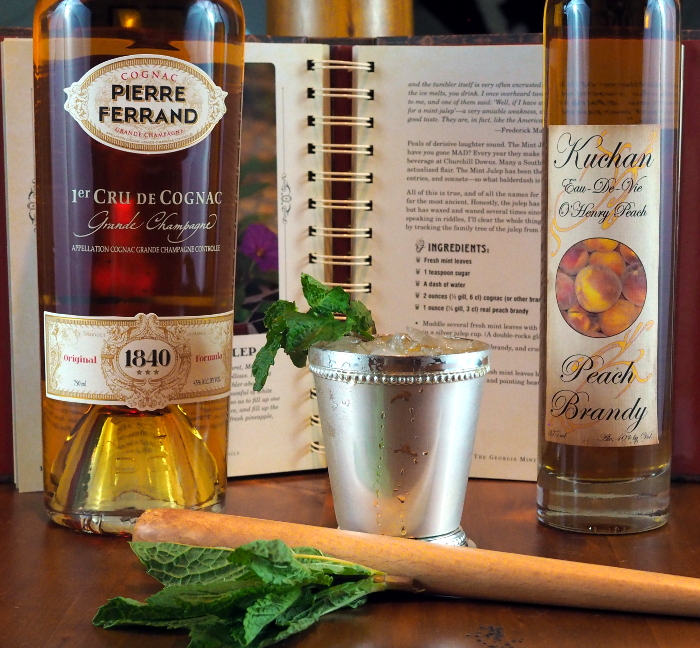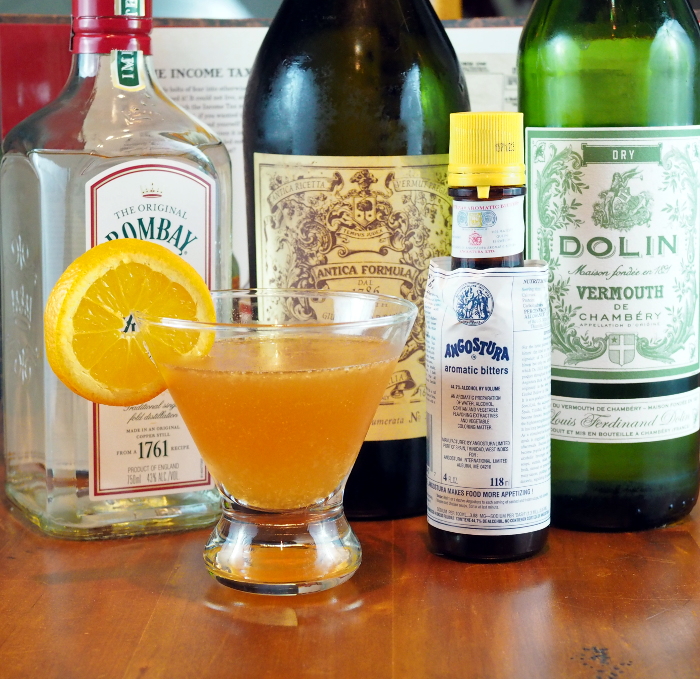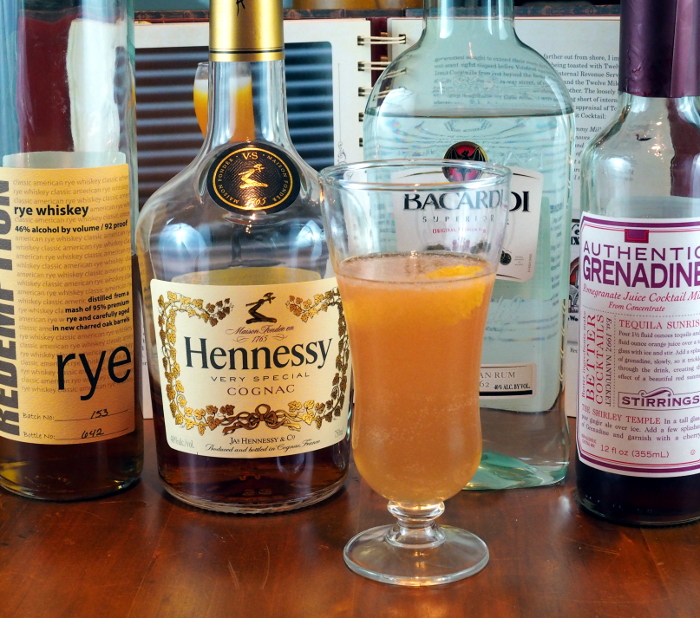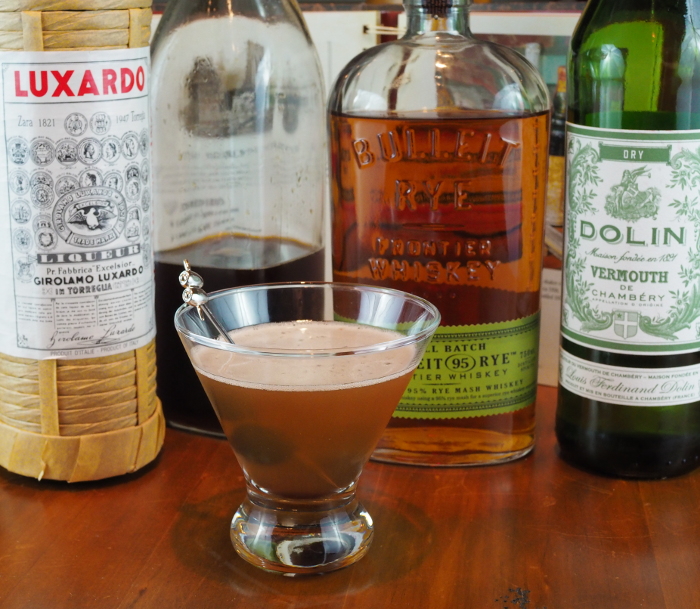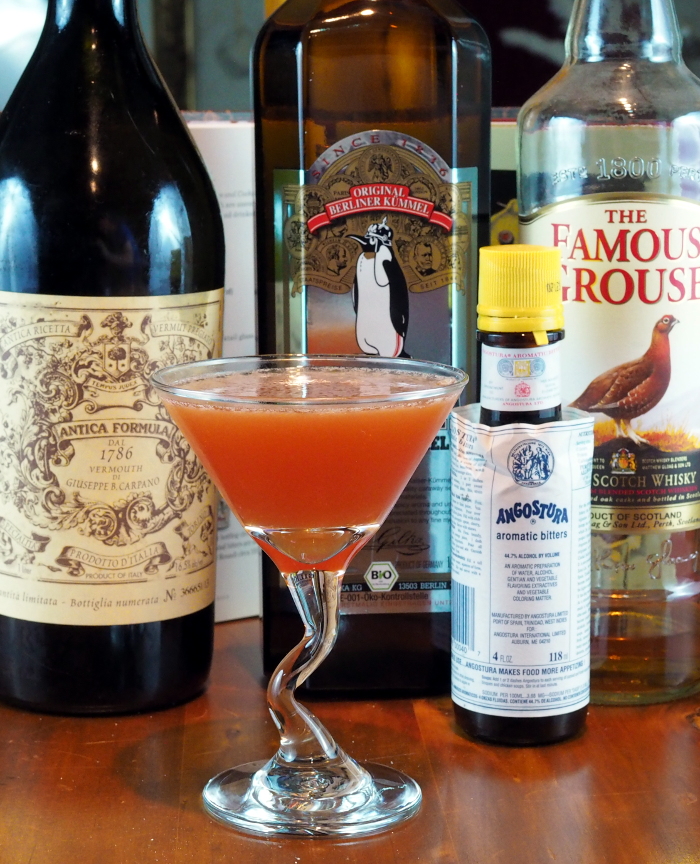One of the first vintage cocktails I ever made was The Aviation:

- 2.50 ounces gin
- 0.75 ounce fresh lemon juice
- 2 or 3 dashes maraschino liqueur
Shake in an iced cocktail shaker, and strain into a cocktail glass. Garnish with a lemon twist
I first heard about the Aviation last year while watching The Blacklist, an NBC television show. In one episode, Raymond Reddington takes agent Elizabeth Keen to Montreal where he orders an Aviation cocktail for her. The drink they present was a dark blue color, and he remarked “It’s from the ’20s, tastes like spring, doesn’t it?”
I had never heard of the Aviation before, so I looked it up online. Most of the pictures showed it with a pale blue color, like the sky, and that was one of the reasons for its name. Not sure where NBC got their dark blue color. The color comes from a liqueur called crème de violette, and the recommended brand to use was Creme Yvette. The standard recipe was more like:
- 2.00 ounces gin
- 0.75 ounce fresh lemon juice
- 0.50 ounce maraschino liqueur
- 0.25 ounce Crème de violette or Crème Yvette
Shake in an iced cocktail shaker, and strain into a cocktail glass. Garnish with a lemon twist
I was a little disappointed that the Aviation recipe in Dr. Cocktail’s book omitted the crème de violette. I really like the blue color, but as I am determined to make every recipe per his instructions I was willing to make one without it. But I wanted to find some real crème de violette so I could compare the two.
Of course, crème de violette or Crème Yvette is impossible to find in North Carolina, but on a recent trip to Washington DC I went to Ace Beverage and they had a dusty bottle for sale, so now I was good to go.
The first thing I noticed was that the Crème Yvette added more of a reddish pink hue to the drink than I was expecting. If I was basing any judgment on the color, I would have to conclude that Crème Yvette didn’t really add anything to the presentation.
But I base my reviews mainly on taste, and I found the second recipe much more to my liking. Let’s get serious, gin and lemon go together like salt and pepper, peanut butter and jelly and chocolate and raspberry. It’s hard to go wrong. But there really wasn’t enough of the maraschino liqueur for my palate to taste anything outstanding about the drink. In the second recipe, the increased cherry liqueur and the Crème Yvette add a new dimension to the cocktail, and I liked it much better. It was a little sweeter with more floral overtones.
But I mentioned that I had made this cocktail before I ever started this blog, so what recipe did I use? I used the second one, but instead of crème de violette I used violet syrup.
When I was researching crème de violette, I got a hit on Amazon for Monin Violet Syrup, so I bought some. Not only does it add the requisite blue color, the added sweetness makes the drink more appealing to a wider audience (i.e. my wife). At a quarter ounce, it’s not enough to overpower the drink (the lemon juice makes sure of that) and I found this variation to be my favorite. So if you are thinking of having an Aviation and are waiting on the crème de violette, give the violet syrup a shot and I don’t think you’ll be disappointed.
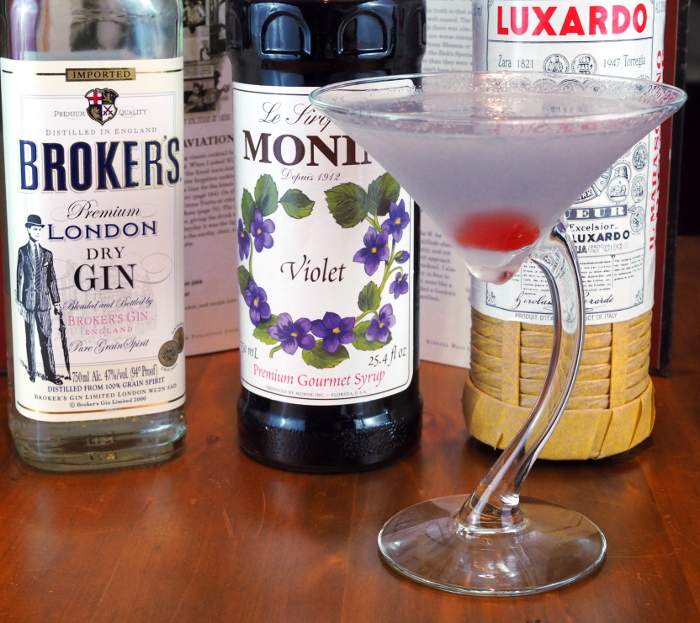
Note that the Death and Co. book also favors the second recipe, although they add a bit of simple syrup as a sweetener.
Rating: 3/5 without crème de violette, 4/5 with Crème Yvette and 5/5 with violet syrup.
Notes: I’ve developed an attachment to Broker’s Gin, so that’s what I used, but I literally smacked my forehead when I remembered the big bottle of Bombay Sapphire I have. I think it would add even more to the blue color, and the floral notes would complement the violet.
